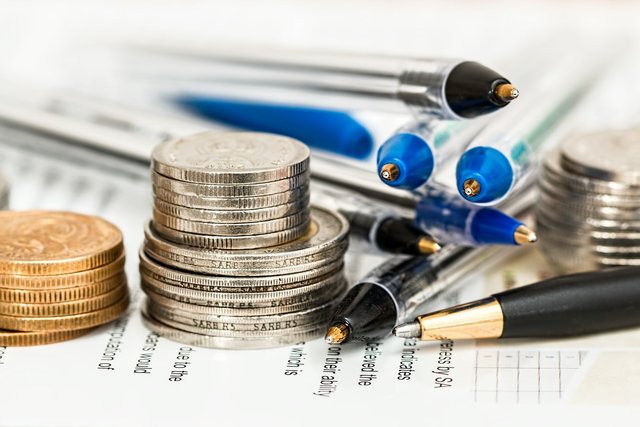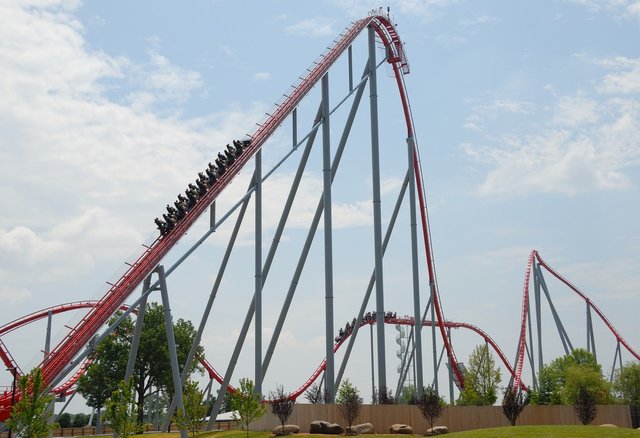How to Setup & Manage a Portfolio (Pt. 3/5)
In this part I will go more theoretical and explain a few things you have to keep in mind when constructing a portfolio and adding assets to it. This is a continuation of my portfolio series, you can read the previous parts here:
- [1] https://steemit.com/money/@profitgenerator/how-to-setup-and-manage-a-portfolio-pt-1-5
- [2] https://steemit.com/money/@profitgenerator/how-to-setup-and-manage-a-portfolio-pt-2-5
First Rule of Portfolios:
First rule is to only add good quality assets, that fit the following criteria:
- Liquid: The difference between the bid and ask price , the spread, should be small. The depth of the bid column should be big, so that you can liquidate your asset anytime you want, in it's entirety, without moving the price a lot.
- Predictable: Investing is not gambling, so your assets should have some sort of predictability to it, you have to know for sure that a buyers will be there tomorrow and that it won't fluctuate wildly, randomly, and in big swings.
- Reputable: The asset itself has to be trusted/reputable, preferably a public asset with no central point of failure, and you have to have trusted market participants that can verify the authenticity of the asset and of the market.
These criterias in my opinion are essential if you want to choose assets to invest in. There are of course illiquid assets, that we talked about in the previous part, but those are still relatively liquid, like real estate, you can know for sure that you will find a buyer for that, but the price might not be the same tomorrow. So there is risk there, but not liquidity risk, rather just price risk. Then you have to have trust, you don't buy fake stocks from boiler rooms, and you don't buy scam coins from altcoin scammers, period.
So avoid liquidity risk and gambling-like assets, and of course scams. This is what a bad investment looks like:
TOOL - It has 0 liquidity, no bid column, nobody buys this, nobody cares, and every existing investor has lost all their money by investing in this. It was probably a scam coin as well.
Liquidity:
Then you have to group your assets based on liquidity, you have to know how much cash you would have in hand if you were to liquidate everything now. If you have an investment idea that requires 50,000$, but all your assets are locked up and would take months to get your hands of that cash, then it is a problem. I think a considerable portion of your assets should be liquid, so that you can swap the investments quickly if you were to found a better one.
I also cannot emphasize enough how important it is to always look at the BID price of the asset, because we only care for how much money we would get if we were to liquidate it now. And the depth of the BID column, as it is preferable if we can sell all our assets at the highest bid price, without moving the price down too much.
Risks:
It is preferable if we only keep a small percent of our capital in 1 asset, and in 1 industry that is correlated. There are different layers of allocation, based on the correlation between the prices of the assets.
First of all, on an asset-to-asset basis, it is recommended to allocate only a small percent into an individual asset, for example up to 3% of our total capital, according to many experts. This is a basic risk management strategy, because if the asset were to fall in price, we would only lose a small % of our capital.
Then we have to understand that if 2 assets are correlated in price, then they are essentially the same asset. For example:
- Keeping 3% in BTC, and keeping 3% in GBTC (investment trust). They have a very high correlation rate, so it's like keeping 6% in BTC, or as we call it exposure to BTC.
So all assets in our portfolio should have little or no correlation between one another. This is of course rare, since all assets are eventually moved by the same macroeconomic factors, but at least we limit the correlation as much as possible.
So BTC and LTC and GBTC is essentially in the same risk umbrella, while investing in BTC and Overstock Inc. stocks is not in the same risk umbrella, as Overstock might have some exposure to BTC, however they are a giant online retailer and would do fine if BTC were to fail, same goes vice versa.
So you have to ask yourself, if asset A would fail, how much is asset B and C exposed to A, and how much would those lose in value if A would to fail. How much are they inter-exposed to each other? The less is the better.
This is how you minimize the risk that your total capital is exposed to. And keep in mind this goes beyond just price risk or liquidity risk, there are countless other risks that you are a good investor have to keep in mind, for example:
- Third party risk: Doesn't matter how un-correlated your altcoins are, if you keep them all in Bitfinex, and they get hacked, then you still lose money. This is what really happened.
- Regulatory risk: All altcoins are essentially at risk by government interventionism, and could take a hit anytime some law comes out somewhere.
- Macroeconomic risk: Central banks, the global economy, are all essentially influencing your assets in some ways.
- Information risk: You might lose all your capital, just by losing your access to it by losing some passwords. In the government world, all your capital is essentially tied to a piece of ID document, if somebody were to forge that, he can steal all your capital.
... and many other forms of risk, that you have to recognize and factor into your investment decisions!
Volatility:
Volatility is usually not considered as a risk, because the market can swing both ways, and if you have a good risk management strategy, then actually becomes a good thing, because it makes our profits grow faster.
If a market doesn't move for a long time, it means it is quiet, nobody is interested in it, probably nothing bad happened as then people would sell of fear, but nothing good either as people don't buy more.
A low volatility market carries less volatility risk, so technically more % of your portfolio can be allocated to it, because we only care about the downside risk, the profit is always secondary.
A high volatility market carries high volatility risk so less % of your portfolio should be allocated to it.
The first rule of investment is to minimize risk, the risk is the priority, the profits are always secondary. Protect your capital first, and then try to multiply it.
I prefer high volatility markets, because there is more action there, but I always allocate my % exposure to it accordingly.
Thats it for this part, we have touched the basics of portfolio management, in the next part we will try to integrate this knowledge into a spreadsheet, and show you how to calculate risk, volatility and such, the next part will be more practical things.





The link to pt2 goes to the image-hosting site
For me it doesn't, only the images are linked to the hosting site.
Strange. It's ok for me now as well. My browser playing up?
Probably, if you use mobile browser then the touchscreen might be more sensitive and misclick on the wrong link.